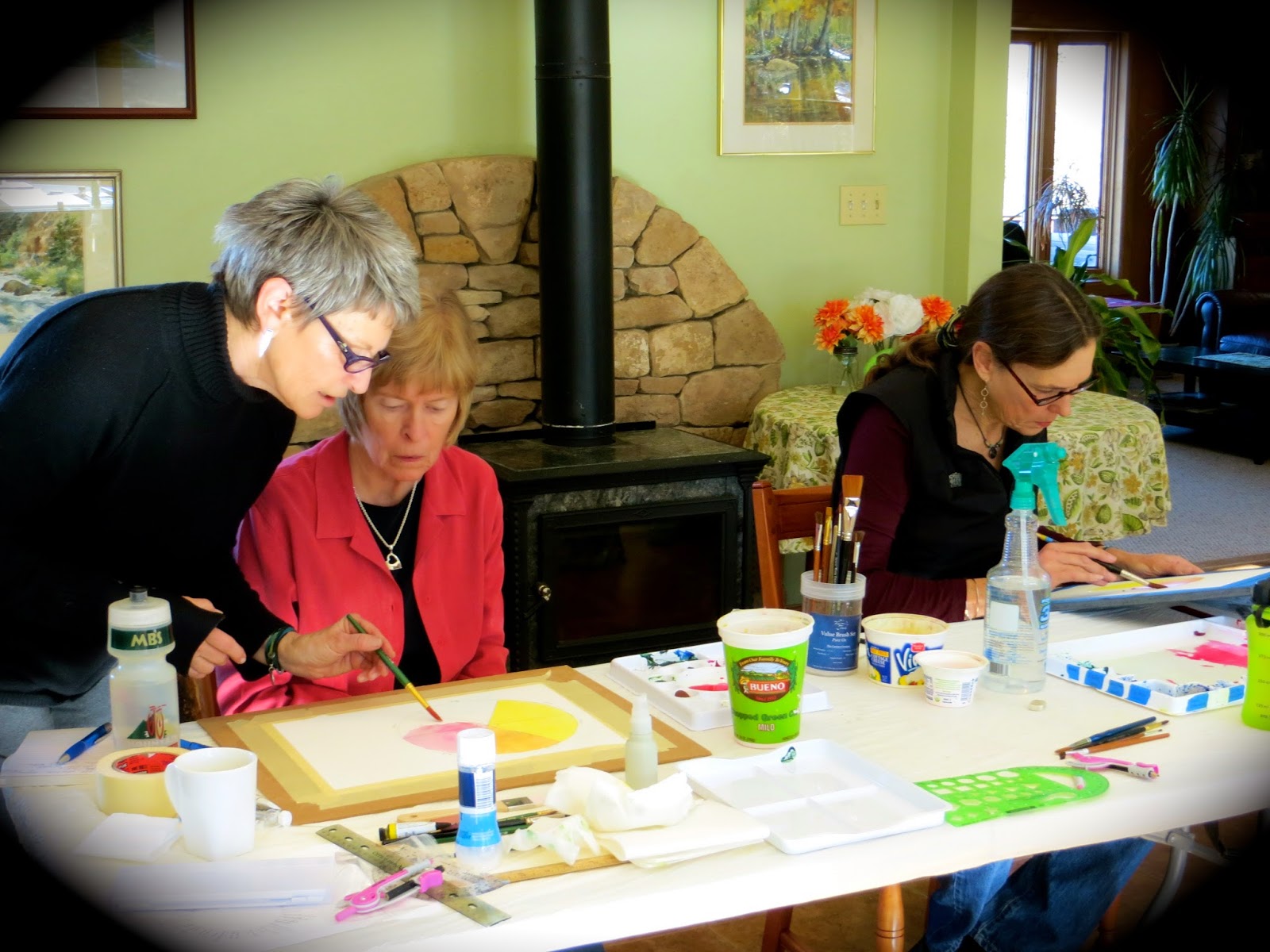This watercolor project, "Roses with Plaid Underpainting",
was inspired by our featured woman artist for February -- Anne Frances Byrne.
One of her favorite subjects to paint in watercolor was the rose. Byrne did most of her sketching on-site, to gather information and references, for painting later on in her studio.
For my reference, I used photos I took of the roses in my son's garden . . .

. . . and also the sketches I had made, with my granddaughter . . .
In this project, we will begin the painting with a grid -- which, in this project, is used as a design tool.
1. On a mounted piece of 12" x 15" watercolor paper, draw a grid of horizontal and vertical lines, approx. 3" apart, in pencil.
2. Now, paint a pastel plaid. Paint one or two vertical stripes a very pale Yellow (Hansa Yellow or Aureolin or Winsor Yellow). Paint one vertical stripe a very pale Rose (Quinacridone Rose or Permanent Rose or Rose Madder Genuine). Leave one or two vertical stripes unpainted. Let those painted stripes dry.
3. Next, paint one or two horizontal stripes a very pale Yellow. Paint one horizontal stripe a very pale Rose. Paint the top horizontal stripe a very pale Blue (Cobalt Blue).
Try to keep this underpainting very pale, because we are painting pale peach roses on top.
4. When this underpainting is totally dry, draw two or three roses, in pencil -- with some stems and leaves. Try to keep these roses in the bottom 2/3 or 1/2 of your paper, since these will be your foreground roses . . .
5. Mix up a Coral on your palette, using the Rose and the Yellow. Ignore the grid for now, and paint the roses, using this Coral mixture. Leave parts of the petals unpainted. On some of the larger petals, grade the wash, so you get a nice variation of value; thus, giving your petals some form. Paint some of the shapes in the centers of your roses a very intense Coral.
6. Mix up two different Greens (Sap Green + Cobalt Blue; and Sap Green alone), and paint the leaves and stems. Paint the thorns with Burnt Sienna (or Quinacridone Burnt Orange).
7. After you've painted the stems and leaves, work on the background grid. First, draw a few more vertical and horizontal lines, in pencil. This time, do not draw over the roses that you've painted.
You should have some 1" stripes and some 2" stripes, going both ways in the background.
8. Now, mix up a wash of Quinacridone Gold. Paint three of the vertical stripes with the Gold. When that dries, paint one horizontal stripe with the Gold. Remember -- don't paint over the roses when painting these stripes -- keep it in the background.
9. Mix up a wash of Quinacridone Rose (or Permanent Rose). With this wash, paint three vertical stripes, keeping it in the background. When that dries, paint two horizontal stripes with the Rose.
10. Mix up a wash of Cobalt Blue. With this blue, paint three or four vertical stripes. When that dries, paint three horizontal stripes with the blue.
If you like the look of your painting, you could stop right there. Or, you can proceed with another layer of roses.
11. Draw one or two smaller roses in the background, with stems and leaves.
12. Then, mix up a wash of Quinacridone Burnt Orange or Burnt Sienna. Use this wash to paint all the negative shapes. In other words, you will paint this wash over everything, except all the roses and leaves. By doing this, the background roses will emerge, but will still look as if they are further back than the foreground roses.
13. Ignore the grid again, and paint the background roses, stems, and leaves. Use the coral mixture and Magenta (Quinacridone Magenta or Permanent Magenta) for the roses, and Sap Green mixed with Blue, for the leaves and stems.
14. Shift to the background grid again. Draw your last vertical and horizontal lines with pencil. So, you will be dividing all the 2" stripes in half. You should end up with 1" squares throughout your background. (Don't worry if it doesn't work out perfectly.)
15. Paint some Blue (French Ultramarine) vertical stripes and some Blue horizontal stripes -- remembering to keep these Blue stripes transparent, and in the background. Let this layer dry.
16. To finish, mix up a dark Blue (French Ultramarine + a little Magenta + a little Burnt Sienna). Paint some of the background squares with this dark Blue color. (Hint: Paint the darkest dark behind/next to those roses that you really want to stand out.






























